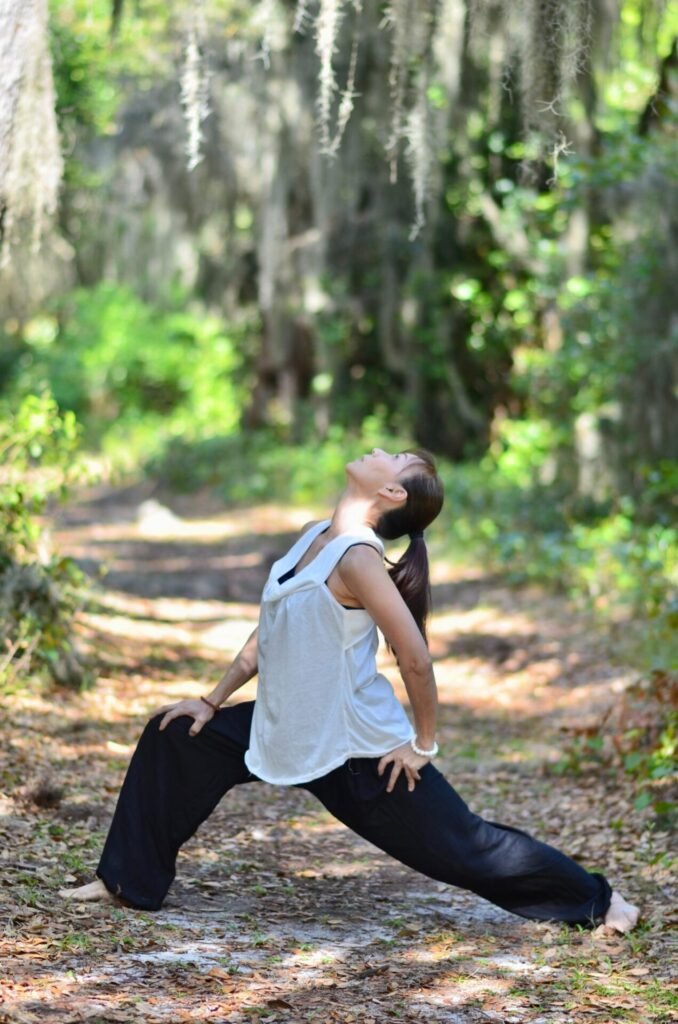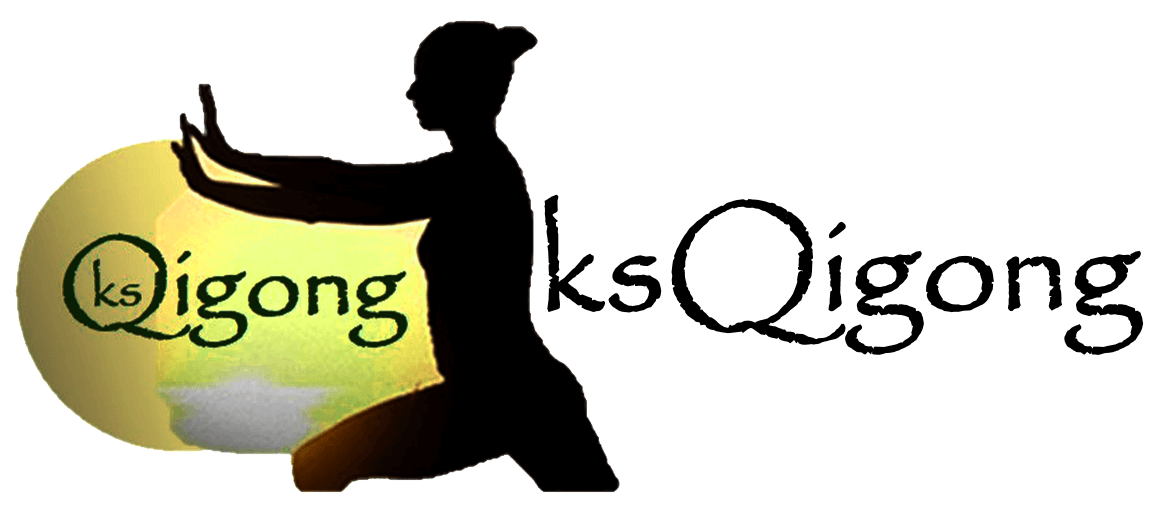


For what age is Qigong best?
Qigong is a versatile practice that can benefit people of various ages, from children to seniors. Its gentle, low-impact movements and focus on relaxation, balance, and overall well-being make it suitable for multiple age groups. Here’s how Qigong can be adapted for different age ranges:
- Qigong can be simplified and adapted to make it engaging and accessible for children and teenagers. It can be a fun and mindful way to introduce them to relaxation techniques and body awareness. Qigong can help children and teens reduce stress, improve concentration and enhance physical coordination.
- Adults of all ages commonly practice Qigong. It offers a low-impact exercise to improve flexibility, balance, and overall physical fitness.
- Qigong’s focus on balance and flexibility can help maintain and improve mobility, reduce joint pain, and prevent falls in Seniors.
- Mostly all ages: Qigong can be adapted and modified to suit the needs and abilities of people of most (not all) ages, as frailty can be an issue for some, where practice is not then advised (I will make that judgment and may need to consult with your GP). The practice can be gentle or vigorous depending on the individual’s preferences and physical condition. Qigong is accessible to people with varying fitness levels, from those seeking a low-impact activity to those seeking a deeper mind-body connection.
Some Qigong techniques provide more cardio/aerobic workout and also we sometimes use ankle and wrist weights, or resistance bands, to help strengthen muscles; these modifications are based on the abilities of the overall class.

Is Qigong a Mindfulness practice?
Yes, totally. Mindfulness is the practice of paying attention (being aware) to the moment as it is now, without judgment and being aware of your feelings, thoughts and environment. Qigong incorporates mindfulness in several ways:-
- Mind-Body Connection: Qigong emphasises the connection between the mind and body. Participants learn to move mindfully, synchronising their breath with gentle, flowing movements.
- Breath Awareness: Breath is a central component of Qigong, which encourages conscious and deep breathing.
- Emotional Awareness: Qigong often involves cultivating positive emotions and emotional balance.
- Present-Centred Focus: Qigong exercises are performed slowly and deliberately, focussing on their movements, breath, and body sensations, emphasising being fully present. This helps one to stay in the here and now, a fundamental aspect of mindfulness.
- Stress Reduction: By engaging in Qigong with a mindful approach, participants can alleviate stress and achieve a state of calm and relaxation.
- Body Scan: Some Qigong routines involve a body scan, during which participants mentally explore and release tension from different body areas. This practice is also found in mindfulness work.
- Awareness of Energy Flow: In Qigong, many become aware of the flow of vital energy (qi) within their body. They visualise and sense the movement of energy, deepening their connection to the present moment.
Combining the mindfulness aspect of Qigong with its other elements can lead to a practice that enhances both your inner awareness and your overall health. For more on the benefits of mindfulness, click here: Mindfulness Benefits.
Are there any risks from doing Qigong exercises?
Qigong is generally considered a safe and low-impact practice, and it carries few risks for most people. However, as with any form of physical or meditative exercise, there are some considerations to keep in mind:
- Physical Strain through Over-Exertion: Qigong exercises are typically low-impact, but some movements can be physically demanding. Listen to your body, and don’t force movements or stretches beyond your comfort level. Gradual, gentle progression is key.
- Medical Conditions: If you have specific medical conditions or are taking medications, consult your GP before starting Qigong. Some Qigong exercises involve deep breathing, which could be contraindicated for certain respiratory or cardiovascular conditions.
- Energy Rebalancing: In some Qigong traditions, it is believed that imbalances in the flow of Qi can be temporarily disrupted as the body adjusts to the practice. While this is considered a normal part of the process, some people might experience mild discomfort and emotional release; this is usually mild, temporary and very rare.
- Energy Sensations: Some participants may report experiencing various sensations, such as tingling, warmth, or energy movement within the body. While these sensations are generally considered favourable and even a sign of Qi flow, they may not be experienced by everyone, which is fine too.
If you have any concerns about your ability to participate safely, do consult with your GP. If I have any concerns about your suitability for these classes, I may ask you to provide a letter from your GP stating they believe you are fit enough for them.


What are the different schools of Qigong today?
Qigong has evolved, leading to the development of various schools and styles, each with its unique approaches, techniques, and philosophies. The following are some of the different schools and styles of Qigong that exist today:-
- Health or Medical (Therapeutic) Qigong: This school of Qigong focuses on using Qigong exercises for therapeutic purposes. It involves a combination of movements, breath control, meditation, and energy work to promote physical and mental health. This is the type of Qigong that we do in these classes.
- Martial Qigong: Many martial arts styles incorporate Qigong exercises to enhance the effectiveness of their techniques. Martial Qigong emphasises the development of physical strength, flexibility, balance, and the generation of power (jing) through the cultivation of qi.
- Spiritual Qigong: Ch’an Buddhism (China, Zen in Japan), can be integrated with Qigong practices. This combination focuses on meditation, mindfulness, and the cultivation of inner peace and spiritual awakening. We do not incorporate this as our classes are secular.
- Tao Yin: Tao Yin is a Qigong school that focuses on stretching, breathing, and meditation to promote physical health and emotional well-being. It shares similarities with yoga in its emphasis on postures and flexibility.
- Musical Qigong: Some schools of Qigong incorporate music, sound, and chanting into their practice to enhance energy movement and focus the mind. Sound and vibration are believed to have therapeutic effects.
- Wild Goose (Dayan) Qigong: Wild Goose Qigong is a popular system with various forms that mimic the graceful movements of wild geese. It includes a wide range of movements, breathing techniques and meditation for health and spiritual development.
These are a few examples of the many Qigong schools and styles that exist today. Each school or style may have its unique techniques and philosophies and they may also interweave them too; making Qigong a diverse and adaptable practice that can be tailored to the individual’s specific goals and needs.
What is Yang-style Qigong?
Yang-style Qigong refers to a category of Qigong practices. Yang-style Tai Chi/Qigong is known for its gentle, flowing movements and emphasis on balance, relaxation, and internal energy cultivation to promote health, vitality, and mental tranquillity.
Key features of Yang-style Qigong include:-
- Flowing Movements: Yang-style Qigong features smooth, flowing movements that are typically slow and graceful.
- Mind-Body Connection: It emphasises the connection between the mind and body. You are encouraged to be fully present in the moment, with a clear mental focus on each movement and breath.
- Breathing Techniques: It promotes diaphragmatic or abdominal breathing, believed to improve oxygenation and relaxation.
While there are specific Yang-style Qigong routines and sets of movements, the exact sequences and practices can vary among instructors and schools. Some well-known Yang-style Qigong routines include: Shibashi (18 moves), Wu-Xing (5 Elements set), Ershibashi (24-Form) and Ba-Duan Jin (the 8 Silk Brocades set) which incorporate Yang-style movements, and other variations created by different instructors and organisations. Overall, Yang-style Qigong offers a holistic approach to enhancing physical and mental health and wellbeing.


What are the differences between Tai-Chi and Qigong?
Qigong and Tai-Chi are related mind-body practices that both have their origins in China and share some similarities, but they are distinct in several ways:
- Origins and Purpose:-
• Qigong is a broad category of practices that focus on cultivating and balancing the body’s vital energy.
• Tai-Chi, also known as Tai-Chi Chuan, or Tai-Ji. While it incorporates Qigong principles, Tai-Chi is primarily seen as a martial art (self-defence) with a specific flowing movement sequence and postures. - Movement and Posture:-
• Qigong exercises vary widely in terms of movement and posture. Some Qigong forms involve stationary postures, while others include slow, flowing movements. The focus is cultivating and directing energy (Qi) around the body through movements based on birds, other animals and also nature’s motions and changes.
• Tai-Chi consists of a specific sequence of flowing movements that are practised continuously, slowly, and mindfully. - Complexity and Mastery:-
• In Qigong, each person is seen as an individual whose style and technique will naturally vary (be unique to them), and the focus is on the individual’s inner relaxation above precise mastery of technique, per se.
• Tai-Chi forms are typically more complex and choreographed than Qigong exercises, with an emphasis on getting the techniques “right”, through repetition.
In summary, while both Qigong and Tai-Chi share a foundation in Chinese philosophy, Qi (energy) cultivation, and slow, mindful movements, they have varying purposes, movements and applications.
Are there any medical issues where someone should not do Qigong classes?
Qigong is generally considered a safe and low-impact practice that can be adapted to suit a wide range of people. However, there are certain medical conditions or situations where it’s advisable to consult with a GP/Healthcare professional before starting Qigong classes or where participation in such courses might need to be modified or temporarily avoided. Some of these medical issues and considerations include:-
• Pregnancy: While Qigong can be beneficial during pregnancy, some movements and postures may need to be modified to ensure the safety of the expectant mother and the baby.
• Severe Cardiovascular Conditions: People with severe heart conditions, recent heart surgery, uncontrolled low or high blood pressure; Qigong involves natural, deep breathing, which may impact heart rate and blood pressure (usually lowering both, which can be beneficial if high).
• Respiratory Disorders: For severe respiratory conditions, such as asthma and COPD, some Qigong exercises, which involve deep and controlled breathing, may need to be adapted for trainees with such issues, which is always possible.
• Seizure Disorders: Persons with epilepsy (a recent history of seizures) are generally advised not take part in Qigong classes, as it may involve an altered state of consciousness.
• Mental Health: People with certain mental health conditions, such as psychosis and schizophrenia, should avoid doing Qigong.
• Infectious Diseases: With contagious illness, one must consider the health and safety of oneself and others to prevent the spread of infection.
• Recent Surgery or Injury: If you have recently had surgery or sustained a significant injury, it is best to delay your Qigong classes. Modifications or adaptations may be needed to accommodate your condition, do speak with me beforehand.
• Medications: Some medications, especially those that impact balance, coordination, or blood pressure, could impair your ability to practice Qigong. Again, please check for possible interactions between your medications and the practice with your GP.
It’s important to remember that Qigong can be adapted to suit various physical and health conditions. Additionally, do please inform me, as your instructor, about any health issues before starting a class so I can provide appropriate guidance and adjustment, where possible.



The Link between Qigong and the Legendary Shaolin Temple in China.
The Shaolin Temple (which is in Henan Province, China), is one of the world’s most famous and historically significant centres of martial arts. It has a deep and longstanding connection with Qigong, as well as with martial arts practice. Here’s an overview of the relationship between Qigong and the Shaolin Temple:-
- Historical Connection: The Shaolin Temple, often called the birthplace of Chinese martial arts, was founded in the 5th century for Ch’an (called Zen in Japan) Buddhism. According to popular legend, the Indian Buddhist Master Bodhidharma taught at the Shaolin Temple, and this connection is often cited as the origin of specific practices, including Qigong, Tai-Chi and martial ones that eventually became Kung-Fu.
- Physical Training and Qigong: Legend has it that Bodhidharma noticed that the monks at the Shaolin Temple were not physically fit enough for extended meditation sessions, so he developed a set of exercises to promote health and fitness. These exercises, which included various postures and movements, are often associated with the early forms of what we now call Qigong, which emphasises breath control, energy circulation and mindfulness.
- Health and Longevity: The Shaolin monks recognised the health benefits of Qigong. They further developed Qigong routines to improve physical well-being, strengthen the body and enhance vitality.
- Spiritual Development: The Shaolin Temple monks engage in devoted (Zen) meditation and spiritual practices; Qigong is seen as a means to complement this, by helping them purify their mind and cultivate inner peace, through better breathing and balance training.
The Shaolin Temple’s contribution to developing and preserving Qigong and martial arts practices has profoundly influenced traditional Chinese culture. Over the centuries, these practices have spread internationally and the Shaolin Temple remains a symbol of the fusion of spirituality, health and martial arts expertise.
______________________



